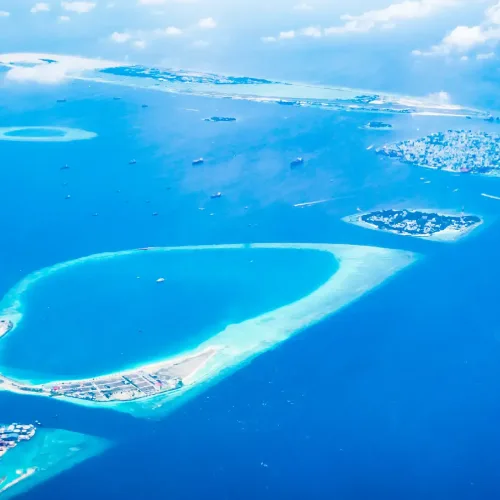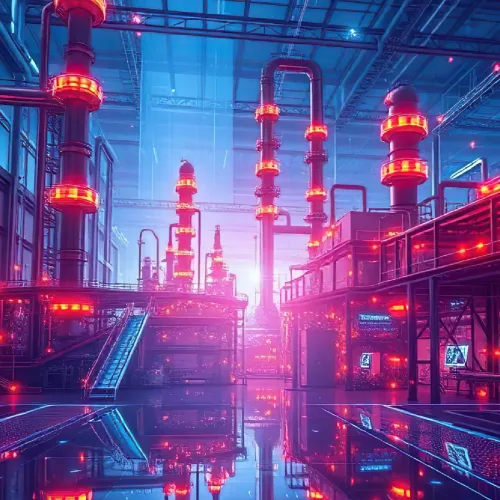
The world is changing rapidly. New technologies are emerging every day. Look at your mobile phones, computers, and even electric cars, see how they are becoming more advanced day by day. All these things need specific components to be created. It’s like a dish requires special spices to make it flavorful. Similarly, these modern devices require unique ingredients to improve their technology and functionality. These “spices” are called critical minerals. These materials may be small. However, they are incredibly powerful substances. They have the potential to fulfill our dreams of advanced technology and sustainability.
The major powers of the world are in a race. They want to guarantee that they have enough reserves of these critical minerals. In this article, you will learn how the earth contributes to the formation of these minerals. You will also understand why everyone is striving to discover and secure them. Let’s explore why these minerals are significant.
Critical Minerals: Small Name, Big Role

These minerals are critical not just because they are rare, but because they are very important for our technology. Critical materials contain special types of metals and elements, like lithium, cobalt, and rare earth elements. Many countries exert their influence across different regions to acquire these materials. They want to stay ahead in technology. These materials are pivotal for advancing green energy projects. Moreover, they play a significant role in clean energy initiatives, like solar panels that are soaking up sunlight, and wind turbines. All of these technologies heavily depend on these critical materials.
How Earth’s Processes Create Critical Mineral Deposits
Critical minerals do not just appear out of nowhere. They are formed through a slow and precise natural process. These minerals are formed through different processes. Let’s take a closer look at some major ways.
1. Magmatic Deposits
We know that the temperature inside the Earth is extremely high, that causes rocks to exist in molten state. This molten state of rocks in known as magma. Over the time, as this magma slowly cools, it either remains underground or emerges as lava on the surface of the Earth. Very important minerals are part of this magma. As it cools, minerals compress and take a concentrated form. These critical minerals include nickel and copper, which are often found alongside cobalt.

2. Hydrothermal Deposits
Hot water flowing through rocks fractures dissolves various small mineral particles. This mineral-laden hot water passes through further cracks and faults. It begins to cool or interacts with other different types of rocks. Copper, lead, and zinc are created by hot water in this way.
3. Weathering and Sedimentary Deposits
When it rains in rocky areas, the carbonic acid in the rainwater reacts with various materials. This reaction removes some key parts of the rocks. It leaves behind heavier and more resistant minerals. Just like water that carries away lighter sand particles but leaves the heavier gold flakes behind. When these rocks break, the dissolved minerals flow through lakes and rivers, and settle in oceans. Over the time, this sediment forms layers that contain valuable minerals. Bauxite, which we use to obtain aluminum, is often created this way.
Curious to know, who is competing to claim these treasures? Let’s try to find out.
The Global Race for Critical Minerals
Powerful countries and companies around the world are in a race to secure these minerals, each of them are striving to outpace the other. However, China is presently leading this competition. China controls the majority of the global supply, while the US and Europe are also striving to catch up in this competitive race. On the other hand, big mining companies like BHP and Glencore are investing heavily in new projects. But the matter is not just about extraction, this is where the real challenges start. Politics and different trade regulations complicate the whole process that leads to conflicts and even wars in various regions. Bloodshed occurs over these resources. It’s neither a simple nor inexpensive process, it’s a deeply complex and messy affair.
I once visited a mining city in my country where I saw the air filled with dust, and it deeply affected me. Moreover, it made me realize that to keep a balance between progress and environmental sustainability is difficult. Let’s take a look at the challenges they are facing.
Challenges and Risks in the Critical Minerals Supply Chain

Since, we need more and more of these critical minerals, exploring new locations has become truly essential. However, finding these minerals is just like searching for a needle in a haystack. In the quest of these minerals, we have destroyed forests, polluted rivers, and displaced communities living in those areas. I had personally seen the river near the mine run a murky red. As China is currently controlling this supply, relying on a single country can be dangerous. If they stop supplying, market prices skyrocket, and factories come to a halt. What can be done about these challenges? Let’s take steps toward solutions.
Useful Information for Stakeholders
No problem can be solved alone, it requires collective effort. Similarly, governments need to come together, sit down, and collectively manage the entire process. Governments should collaborate with other countries to share minerals and invest in funding new mines. To avoid the shortage of minerals, invest in recycling technology.
By using new technologies, materials like nickel or graphite can be the next big thing in production of essential items. Geologists have reached the depths of the oceans for future supplies, and scientists are now setting their sights on asteroids. Another positive development is that various countries are actively collaborating to set up green mining principles. The goal of all these efforts is to make a world where we can meet our needs without turning Earth into a wasteland. It’s a big dream, but not an impossible one.
Conclusion
Geology holds the key to these critical minerals, decides who wins or loses in this global race. Geologists use new technologies to uncover the hidden reserves buried deep within the Earth. The world needs critical minerals, and geology reveals where they are and where to find them. What surprised you the most about the formation of these minerals? Share this article with any friends or relatives interested in science, technology, or the future of our planet. Make sure to express your thoughts in the comments below!




